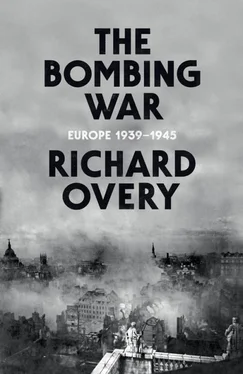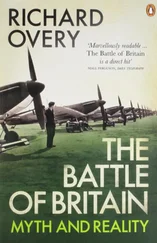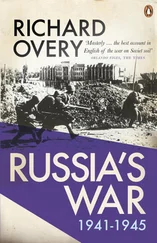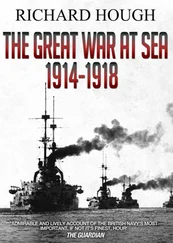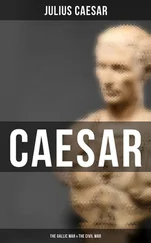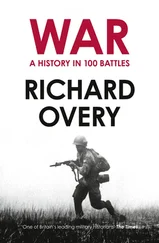30. Ibid., OSS Report 76, Bern station, ‘Germany: Problems of the Bombed-Out Refugees’, 15 Nov 1943; Report 89, Bern station, ‘Germany’, 21 Dec 1943.
31. UEA, Zuckerman Archive, SZ/BBSU/29, Bottomley to Air Marshal William Dickson, 8 Feb 1947, 7 Feb 1947; ‘Comments by Sir John Slessor’, 2.
32. John Deane, The Strange Alliance: The Story of American Efforts at Wartime Co-operation with Russia (London: 1947), 37. Deane visited Stalingrad in late 1943, and was accommodated, he claimed, in the one building left standing.
33. British Red Cross Society Archive, London, J/WO/1/2/2, War Organisation, Second Annual Report, 2.
34. Hans Nossack, The End: Hamburg 1943 (Chicago, IL: 2004), 41.
35. LSE, Fellowship of Reconciliation papers, Box 16, letter from R. R. Stokes to the Sunday Dispatch , 29 Dec 1943.
36. LC, Eaker papers, Box I.30, MAAF Intelligence Section, ‘What is the German Saying?’, item (c), 11 Nov 1944.
37. Ibid., item (i), lieutenant, German Air Force Artillery, 4 Aug 1944.
38. FDRL, Map Room Files, Box 72, OSS Report 50, Bern station, 12 Aug 1943.
39. TNA, FO 371/28541, British Embassy, Bern, to the Foreign Office (French desk), 31 July 1941, encl. memorandum on bombing French industry.
40. TNA, AIR 19/217, War Cabinet memorandum, ‘Bombardment Policy in France’, 24 July 1940.
41. Foreign & Commonwealth Office, Churchill and Stalin: Documents from the British Archives (London: 2002), doc 29, Conversation between Mr Churchill and Marshal Stalin, 12 Aug 1942, 4.
42. Ibid., doc 30, Aide-Mémoire by Mr Stalin to Mr Churchill and Mr Harriman.
43. LC, Spaatz papers, Box 84, Spaatz to Doolittle, 26 Jan 1944.
44. USMA, Bradley papers, War Diary, vol 3, 25 July 1944.
45. LC, Doolittle papers, Box 18, Doolittle to Spaatz, 10 Aug 1944, 2.
46. See the study by Frederick Sallagar, The Road to Total War (New York: 1969), esp. ch 11, ‘Pressures for Escalation’.
47. Conrad C. Crane, ‘Evolution of U.S. Strategic Bombing of Urban Areas’, Historian , 50 (1987), 23–5, 31–2.
48. TNA, AIR 40/1882, DoI memorandum, ‘Crossbow Retaliations’, 3 July 1944; Colyer to DoI, 2 July 1944.
49. AFHRC, Disc MAAF 233, Director of Operations, Mediterranean Allied Air Forces, ‘Bombardment Policy’, 21 Mar 1945, 1.
50. There is still a great deal of debate about this, occasioned largely by the spurious claim that The Hague Rules for the conduct of air warfare drawn up in 1923 were never ratified, or that defended towns lacked the right to immunity of ‘undefended towns’. The existing Hague Convention on the rules of war, drawn up in 1907, makes clear that the intention of the existing rules governing warfare was to define as illegitimate those acts of war designed deliberately to damage civilian lives and property. See Timothy McCormack, Helen Durham, ‘Aerial Bombardment of Civilians: The Current International Legal Framework’, in Yuki Tanaka, Marilyn Young (eds), Bombing Civilians: A Twentieth-Century History (New York: 2009), 218–19, 228–30; Igor Primoratz, ‘Can the Bombing be Morally Justified?’, in idem (ed), Terror from the Sky: The Bombing of German Cities in World War II (Oxford: 2010), 113–30; Anthony Grayling, Among the Dead Cities: Was the Allied Bombing of Civilians in World War II a Necessity or a Crime? (London: 2005), 271–81. It is worth trying to answer the question: could Montgomery’s troops on entering Hamburg in 1945 have legitimately machine-gunned 37,000 of the civilian population? Allied armies could not deliberately kill any civilians except spies or francs-tireurs .
51. Richard Overy, ‘The Nuremberg Trials: International Law in the Making’, in Philippe Sands (ed), From Nuremberg to The Hague: The Future of International Criminal Justice (Cambridge: 2003), 10–11.
52. Geneva Conventions of August 12, 1949, for the Protection of War Victims (Washington, DC: 1949), 164–9; Adam Roberts, R. Guelff (eds), Documents on the Laws of War , 3rd edn (Oxford: 2000), 419–21; M. Bothe, K. J. Partsch, W. A. Solf (eds), New Rules for Victims of Armed Conflicts: Commentary on the Two 1977 Protocols Additional to the Geneva Convention of 1949 (The Hague: 1982), 274–80, 292–318; International Committee of the Red Cross, Protocols Additional to the Geneva Convention of 12 August 1949 (Geneva: 1977), 34–9.
53. FHA, Foley papers, Mss 448, Box 1/5, J. M. Spaight, ‘Bombing Policy’, 12 Sept 1941.
54. Ibid., Box 1/1, Rev. Canon F. Cockin to Thomas Foley, 1 Oct 1941.
55. RAFM, Peirse papers, AC 71/13/61–2, speech to the Thirty Club, 25 Nov 1941, 11.
EPILOGUE: LESSONS LEARNED AND NOT LEARNED: BOMBING INTO THE POST-WAR WORLD
1. Lord Tedder, ‘Air Power in War: The Lees Knowles Lectures’, Air Ministry pamphlet 235, Sept 1947, 13.
2. USMA, Lincoln papers, Box 5, File 5/2, Presentation to the President by Maj. Gen. Lauris Norstad, 29 Oct 1946, ‘Postwar Military Establishment’, 11. Also 5, ‘future war’ will be ‘truly total’, and 6, ‘We must prepare for total war.’
3. USMA, Lincoln papers, Box 5, File 5/3, ‘Industrial Mobilization’, lecture to the General Session of the National Industrial Conference Board, 28 May 1947.
4. Tedder, ‘Air Power and War’, 12–13; USMA, Lincoln papers, Box 5, File 5/2, address by Lauris Norstad, National War College, ‘U.S. Vital Strategic Interests’, 22 Nov 1946, 2 (emphasis in both originals).
5. RAFM, Bottomley papers, AC 71/2/97, Director of Command and Staff Training to Bottomley, 23 Apr 1947; TNA, AIR 20/6361, Air Ministry Exercise Thunderbolt, vol I, Aug 1947, foreword by Lord Tedder; UEA, Zuckerman Archive, SZ/BBSU/3/75, Exercise Thunderbolt, Joining Instructions, Pt II.
6. UEA, Zuckerman Archive, SZ/BBSU/3/75, Exercise Thunderbolt: Precis Folder, 10–17 Aug 1947; on the economy, TNA, AIR 20/6361, Air Ministry Exercise Thunderbolt, Presentation and Report, vol II, item 20: ‘neither the day nor the night offensive succeeded in their strategic task of destroying the enemy’s economy’.
7. Tedder, ‘Air Power and War’, 13, See too TNA, AIR 20/6361, Exercise Thunderbolt, vol II, item 20, 130.
8. RAFM, Bottomley papers, B2318, ‘Thunderbolt Exercise: Note on the Potentialities of Biological Warfare’, 13 Aug 1947; Note by Bottomley [n.d. but Aug 1947].
9. USMA, Lincoln papers, Box 5, 5/2, Somervell address, ‘Industrial Mobilization’, 7.
10. Ibid., Box 5, 5/2, Draft address by Gen. Wedemeyer to the National War College on ‘Strategy’, 15 Jan 1947, 4, 16, 21.
11. Ibid., Box 5, 5/2, Norstad, ‘Presentation Given to the President’, 27 Oct 1946, 1, 6.
12. Ibid., Box 5, 5/3, Maj. Gen. O. Weyland, Air Force-Civilian Seminar, Maxwell AFB, 20 May 1947.
13. Warren Kozak, LeMay: The Life and Wars of General Curtis LeMay (Washington, DC: 2009), 277–81.
14. TNA, AIR 8/799, Air Ministry (Plans), memorandum for the Defence Committee, 16 Oct 1946, 1.
15. D. A. Rosenberg, ‘American Atomic Strategy and the Hydrogen Bomb Decision’, Journal of American History , 66 (1979), 68.
16. TNA, DEFE 10/390, Joint Inter-Service Group for Study of All-Out Warfare (JIGSAW) papers, minutes of meeting 23 Feb 1960, 1–2; meeting 2 June 1960, 1; meeting 4 Aug 1960, 2.
17. Kenneth Hewitt, ‘Place Annihilation: Area Bombing and the Fate of Urban Places’, Annals of the Association of American Geographers , 73 (1983), 278–81.
18. On Britain see Nick Tiratsoo, ‘The Reconstruction of Blitzed British Cities 1945–55: Myths and Reality’, Contemporary British History , 14 (2000), 27–44; Stephen Essex, Mark Brayshay, ‘Boldness Diminished? The Post-War Battle to Replan a Bomb-Damaged Provincial City’, Urban History , 35 (2008), 437–61.
Читать дальше
Конец ознакомительного отрывка
Купить книгу
